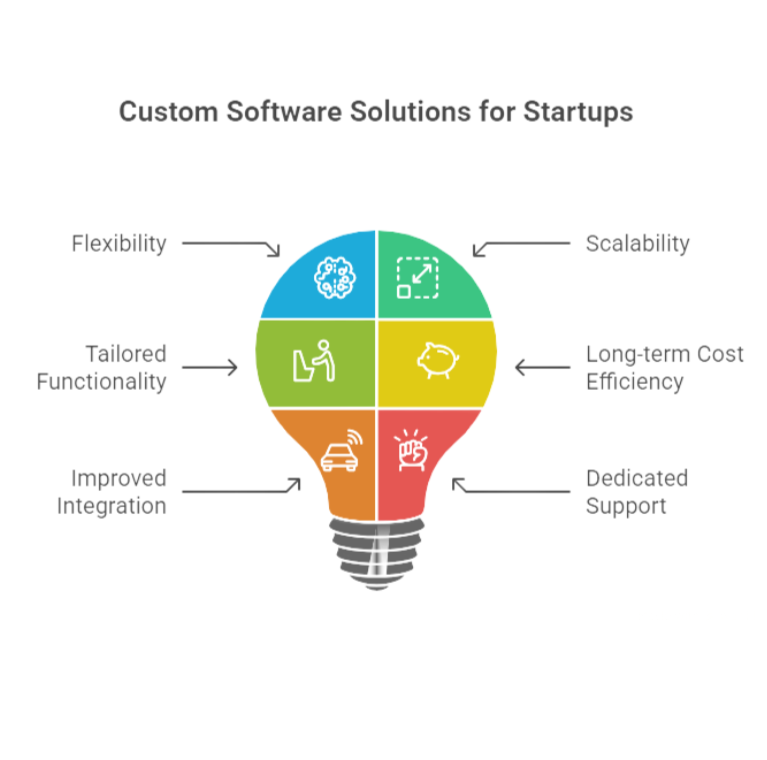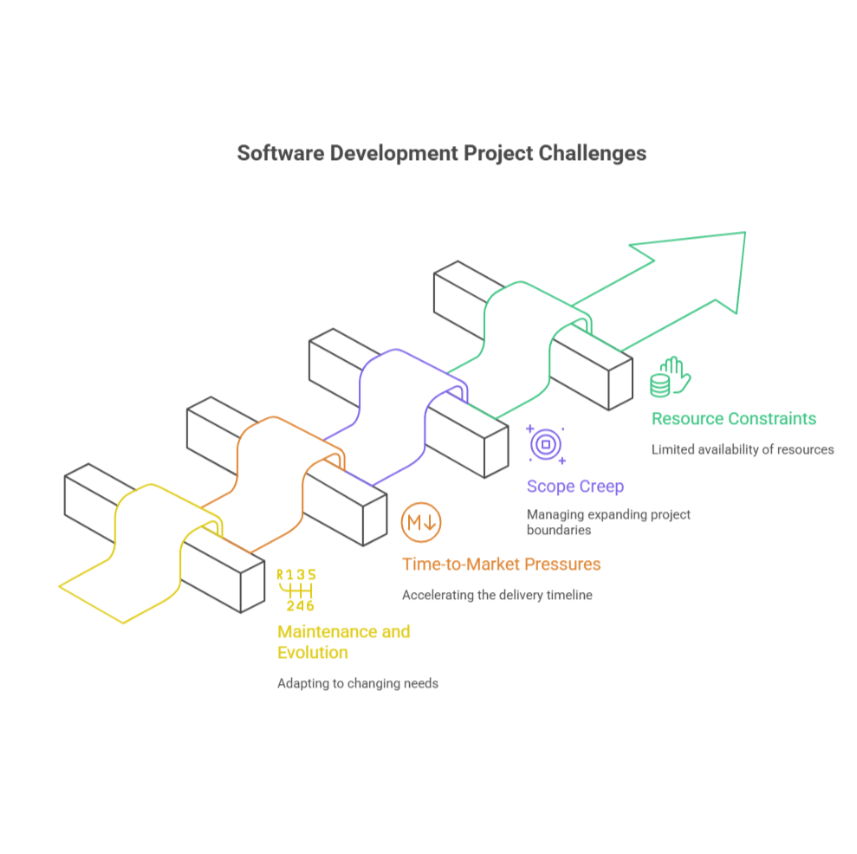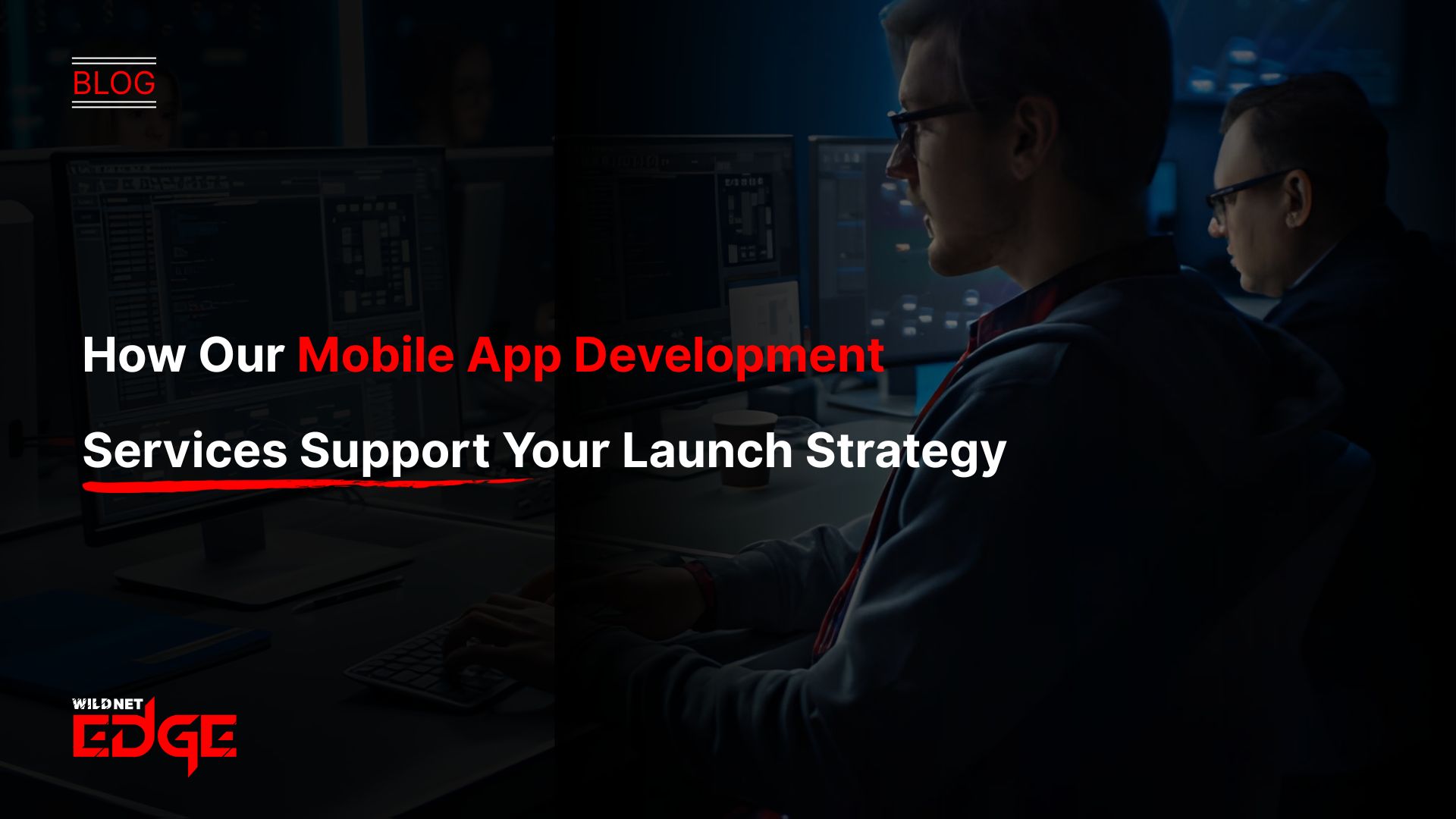If you are a startup, then you must have heard about the buzz: custom software development is becoming a go-to choice for many new ventures. But have you ever wondered why it is so? Why are more startups deciding to build bespoke solutions rather than using off-the-shelf tools? In this article, we will walk you through the ‘why’, the upsides, the challenges, and tips, so you can decide if custom software development is the right thing for your startup.
What Does “Custom Software Development” Mean?
Developing custom software means creating, building, and preserving an application that caters to a company or person’s specific and unique needs instead of a generic, “off-the-shelf” product. This custom approach guarantees that the software works according to the user’s specific workflows, objectives, and operational problems and thus offers a competitive edge by containing only necessary features and allowing integration with existing systems.
Why Startups are Leaning Towards Custom Software: Key Benefits

1. Flexibility & Scalability as You Grow
Startups are dynamic: new features, user feedback all demand changes. Off-the-shelf tools often limit what you can tweak. With custom startup software development, you control how the system evolves. Custom solutions allow alignment with business goals and growth strategies.
2. Tailored to Your Unique Business Model
Your startup is (probably) doing something novel. That means your workflows, data flows, and integrations might not fit neatly into a prebuilt system.
Custom solutions let you bake in just what you need. Custom software is built “to match a startup’s specific needs” rather than forcing you to adapt your business to generic software. This also gives you a competitive edge: features-only-you-have, user experience tuned to your customers, etc.
3. Cost Efficiency Over Time
Yes, custom solutions may have higher costs than just subscribing or purchasing a software license, but oftentimes they can be more cost-efficient in the long run. Why is this the case? Because you will likely not be paying for unnecessary license fees, unnecessary modules, and/or add-ons, and you’ll avoid painful migration later. Off-the-shelf solutions may also have unknown recurring fees associated with your licenses, upgrades, and renewals. No matter how you want to look at it, custom software does not have license fees.
4. Improved Integration and Compatibility
Startups are usually working with multiple tools including CRM systems, analytics tools, payment gateways, legacy systems or other services used to deliver the products and services offered. A custom solution can often be designed to integrate with the tools you are currently using or will be using.
5. Dedicated Support & Ownership
When you go custom, you often get a development team (or company) that knows your system deeply. That means faster bug fixes, tailored updates, and better support. Having a dedicated custom software team ensures you aren’t dependent on generic support docs or faceless customer service. Plus, you own the IP (to the extent your contract allows), not just a license to use someone else’s software.
Challenges to Watch Out For
While you are taking the custom software development, you must be aware of the challenges that are coming for you:

- Maintenance & Evolution: software must evolve. You need clear support, versioning, and updating plans.
- Time-to-Market: building from scratch takes time. For fast validation or MVPs, sometimes simpler off-the-shelf or hybrid solutions may help more initially.
- Scope Creep: features can and will be added as the project unfolds, creating both delays in delivery and increased costs or budgets.
- Resource Constraints: Your team may be small, or they may have never worked on a software project, which makes it all the more important to find the right software development company for your startup.
How Startups Can Nail Custom Software Development from Day One
- Start with a Minimal Viable Product: Do not rush with things at once. Start small, validate assumptions, get user feedback, and then reiterate.
- Use Alliterative Methodologies: Break down development into sprints. Be ready to shift. Methodologies like Lean, Scrum, and Kanban can make a difference.
- Prioritize Features: Prioritize must-have features that deliver real value, and plan optional ones later.
- Choose Right Tech Stack and Architecture: Go for scalable, modular, maintainable designs. Use cloud native services, microservices, decoupled modules, etc.
- Work with a Trusted Custom Software Partner: When picking a custom software development company for startups, look for:
- Experience with startups or scalable systems
- Good communication and collaboration
- Ability to deliver on timelines and budgets
- Transparency in architecture, code quality, and version control
Conclusion: Build Smarter, Scale Faster
In the end, custom software development is more than writing code; it’s about writing your startup growth story.
Startups willing to create their own tools are opting for control, flexibility, and a platform that is built for scalability. Although packaged platforms can help you get going, custom software provides an infinitely more valuable asset: the freedom to expand without any limits.
Every startup faces that moment when “making do” with existing tools starts to feel like running with weights on. That’s your signal. The smartest founders know it’s not about having more tools, it’s about having the right one.
At WildnetEdge, we work with growing startups to turn operational friction into software that fits. Not bloated platforms. Not one-size-fits-all. Just well-built tools that do exactly what your team needs, and nothing it doesn’t.
If your current setup feels like it’s holding you back, that’s your signal. Don’t keep forcing your business to fit the tool. Build the tool that fits your business.
FAQs:
1. Is custom software development too costly for an initial-stage startup?
Cost depends on scope; not always. Many startups embark with a lean MVP focused on one problem. This lowers upfront cost and delivers actual ROI even on the second iteration by reducing multiple tools or hours each week.
2. How long does it take to build a custom software solution?
A basic MVP can take 4–8 weeks. A more complex product might need 3–6 months. Timelines vary based on features, integrations, and feedback loops, but the process is faster when you’re solving one clear problem at a time.
3. Can custom software grow as my startup scales?
Yes. That’s one of the advantages. Custom software is built with flexibility, so it can evolve with your team, your product, and your customers, without forcing you to migrate or start over.
4. How do I choose the right custom software development company?
Look for a team that asks about your business goals, not just your feature list. They should be experienced with startups, communicate clearly, and prioritize speed, adaptability, and long-term scalability.

Nitin Agarwal is a veteran in custom software development. He is fascinated by how software can turn ideas into real-world solutions. With extensive experience designing scalable and efficient systems, he focuses on creating software that delivers tangible results. Nitin enjoys exploring emerging technologies, taking on challenging projects, and mentoring teams to bring ideas to life. He believes that good software is not just about code; it’s about understanding problems and creating value for users. For him, great software combines thoughtful design, clever engineering, and a clear understanding of the problems it’s meant to solve.
 sales@wildnetedge.com
sales@wildnetedge.com +1 (212) 901 8616
+1 (212) 901 8616 +1 (437) 225-7733
+1 (437) 225-7733































